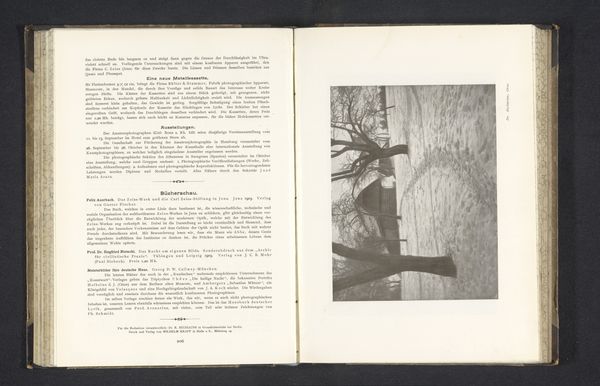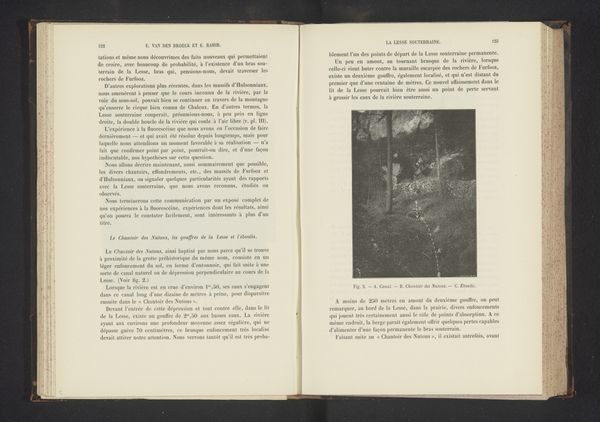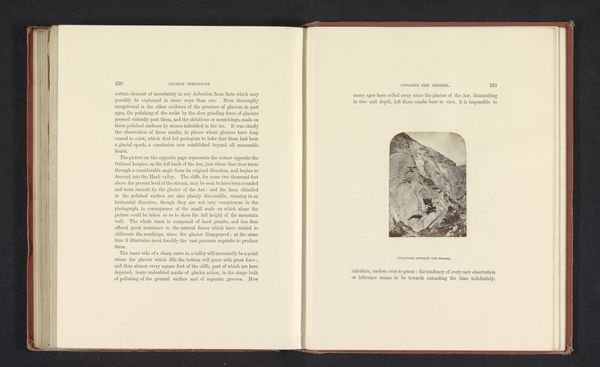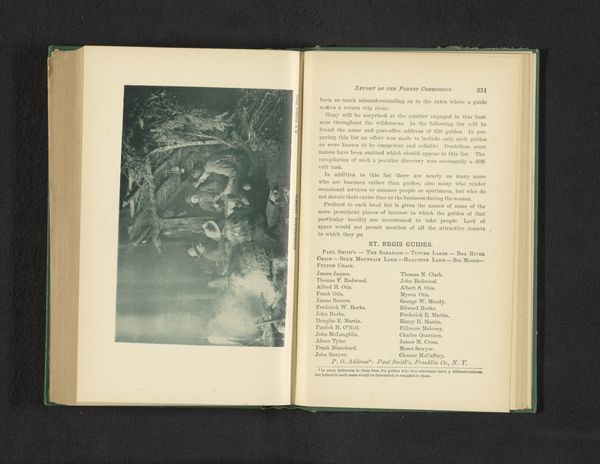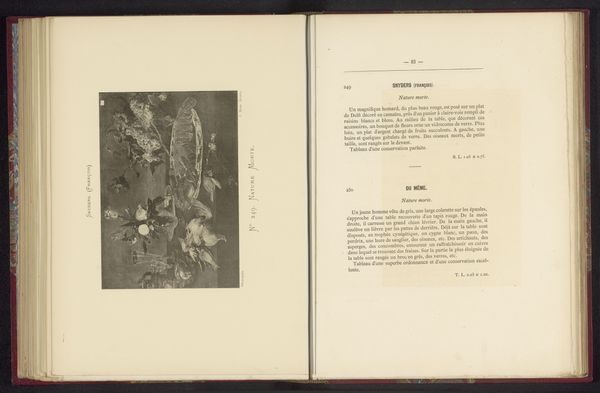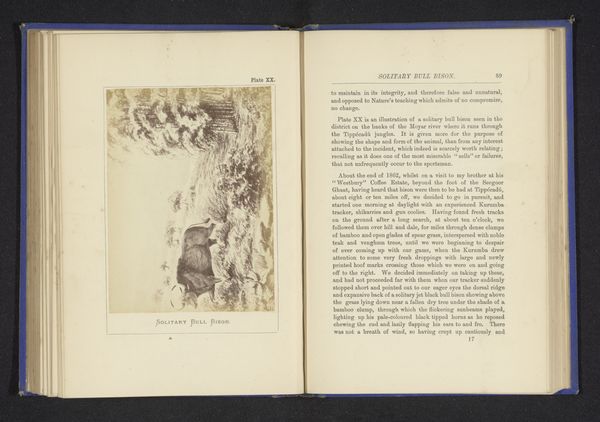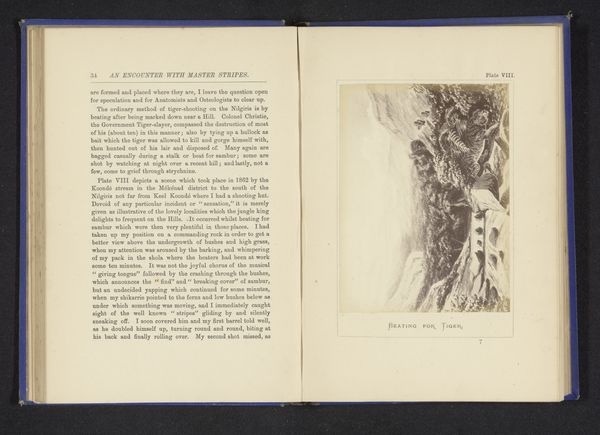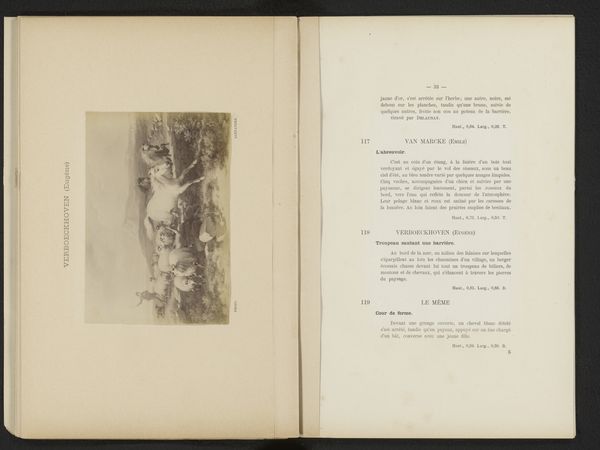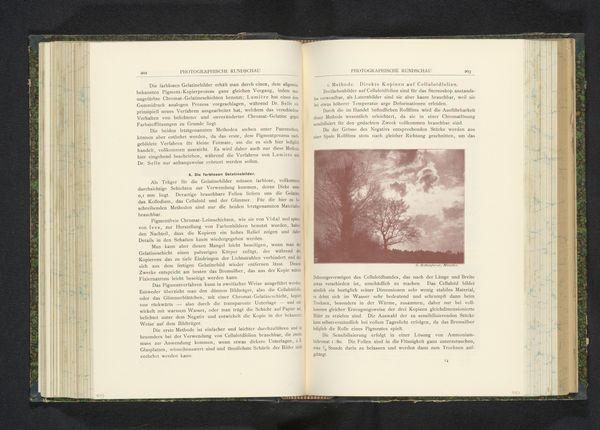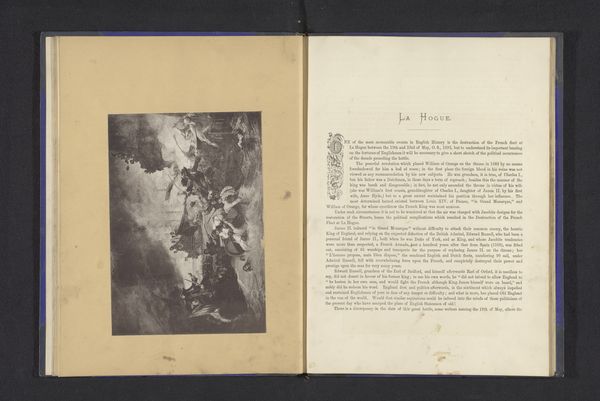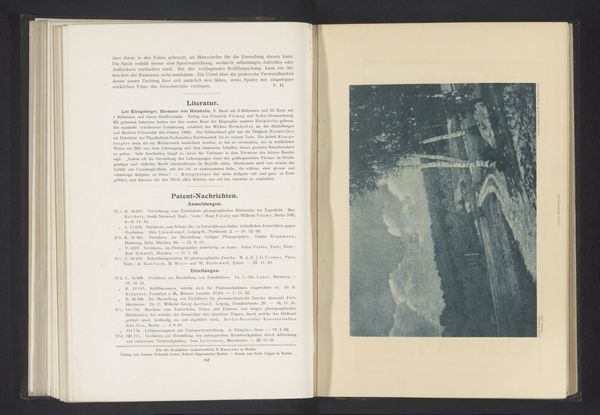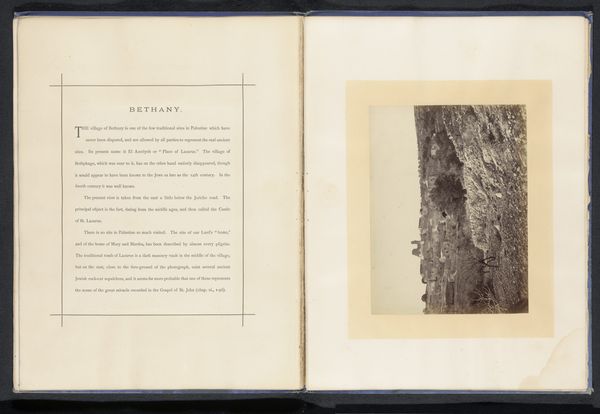
print, photography
# print
#
landscape
#
photography
#
realism
Dimensions: height 76 mm, width 219 mm
Copyright: Rijks Museum: Open Domain
Curator: This intriguing photograph is entitled "Kudde Schapen," dating from before 1903, by Arthur Burchett. It appears to be a printed photograph. Editor: It's wonderfully serene, a monochrome tableau dominated by this tight-knit flock of sheep, nearly blending into their backdrop. The high contrast enhances the almost sculptural quality of their forms. Curator: Burchett's use of photography, particularly its reproduction as a print, underscores its significance in democratizing access to pastoral imagery. Before this accessibility, these subjects were the purview of painted landscapes accessible to a privileged few. Editor: Agreed. But the composition itself, beyond its accessibility, strikes me as incredibly strategic. Notice how the circular arrangement of the sheep draws the eye into a central vortex, suggesting a cyclical unity. Their whiteness, particularly against the dark earth and trees, offers a sharp figure-ground relationship, heightening the impact. Curator: Yes, the image is printed and thus removed, mediated, from its original pastoral moment. Yet, it speaks to a prevailing romanticism, idealized visions of rural harmony amid rapid industrial advancement at the end of the century. There's a yearning embedded in it. Editor: Absolutely. Consider the almost uniform texture and tonality throughout; this flattening effect removes any real sense of depth or individual character, further suggesting the abstraction of pastoral idealism. It feels deliberately constructed, not necessarily observed. Curator: An excellent point. Burchett appears less concerned with the singular experience of a realistic landscape than he is in presenting an idea *about* nature—nature rendered quaint, manageable, even symbolic. The photograph then operates on the level of propaganda. Editor: Precisely. Looking at the photograph again through that lens, I cannot help but imagine this as not just an illustration of sheep but as an image deployed in the rhetoric about land, ownership, and the supposed benefits of ordered agriculture during that period. Curator: Fascinating how the very form and content become intertwined with social, cultural and artistic agendas, subtly shaping how we understand our world and reflect our own ideals and beliefs, doesn’t it? Editor: Indeed. What began as an aesthetically-driven analysis reveals deeper social commentaries when viewed against that historical tapestry.
Comments
No comments
Be the first to comment and join the conversation on the ultimate creative platform.
